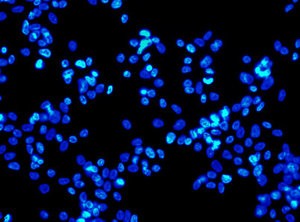
Recently Diagnosed or Relapsed? Stop Looking For a Miracle Cure, and Use Evidence-Based Therapies To Enhance Your Treatment and Prolong Your Remission
Multiple Myeloma an incurable disease, but I have spent the last 25 years in remission using a blend of conventional oncology and evidence-based nutrition, supplementation, and lifestyle therapies from peer-reviewed studies that your oncologist probably hasn't told you about.
Click the orange button to the right to learn more about what you can start doing today.
- You are here:
- Home »
- Blog »
- Multiple Myeloma »
- Considering Stem Cell Transplant for MM? – Read This First!
Considering Stem Cell Transplant for MM? – Read This First!

“Overall survival (OS), progression-free survival (PFS), cumulative incidence of relapse, non-relapse mortality, hematopoietic recovery and second primary malignancy rates were not significantly different between the melphalan 140 mg/m2 (n=245) and melphalan 200 mg/m2 MM groups.”
The standard-of-care (SOC) FDA approved regimen for all newly diagnosed multiple myeloma patients (MM) is induction therapy (RVD) followed by an autologous stem cell transplant (ASCT). Unless you are too old or have serious health issues beyond MM, this is the standard protocol and this what your oncologist will prescribe.
The MM patient is often overwhelmed with a diagnosis of an incurable blood cancer. Unfortunately, your oncologist may be pushing the idea of an ASCT. If you’re like I was, you assume that your oncologist understands issues such as high dose, low dose Melphalan. This may not be the case.
If you are considering an ASCT, please read and think about the study linked and excerpted below. In short, the study below studies an ASCT with a lower dose of a chemo component- melphalan.
To summarize the reason why you would have an ASCT with a lower dose of melphalan:
- Melphalan is cardiotoxic- I developed chronic atrial fibrillation 15 years after I had an ASCT with high dose Melphalan-
- Melphalan ages you-
- Lower dose melphalan seems to have the benefits of higher dose Melphalan with less toxicity-
Please ask your 0ncologist why a MM patient needs to have an ASCT with the higher dose of Melphalan if the lower dose provides the benefits with less toxicity. I don’t understand why.
To learn about evidence-based, non-toxic MM therapies scroll down the page, post a question or comment and I reply to you ASAP.
Thank you,
David Emerson
- MM Survivor
- MM Cancer Coach
- Director PeopleBeatingCancer
Recommended Reading:
Late Onset Chronic Progressive Anthracycline Treatment – What’s in Store for Me?
Melphalan 140 mg/m2 or 200 mg/m2 for autologous transplantation in myeloma: results from the Collaboration to Collect Autologous Transplant Outcomes in Lymphoma and Myeloma (CALM) study. A report by the EBMT Chronic Malignancies Working Party
“Melphalan at a dose of 200 mg/m2 is standard conditioning prior to autologous hematopoietic stem cell transplantation for newly diagnosed multiple myeloma, but a dose of 140 mg/m2is often used in clinical practice in patients perceived to be at risk of excess toxicity.
To determine whether melphalan 200 mg/m2 and melphalan 140 mg/m2 are equally effective and tolerable in clinically relevant patient subgroups we analyzed 1964 first single autologous transplantation episodes using a series of Cox proportional-hazards models.
- Overall survival (OS),
- progression-free survival (PFS),
- cumulative incidence of relapse,
- non-relapse mortality,
- hematopoietic recovery and
- second primary malignancy rates
were not significantly different between the melphalan 140 mg/m2 (n=245) and melphalan 200 mg/m2 (n=1719) NDMM groups.
Multivariable subgroup analysis showed that disease status at transplantation interacted with overall survival, progression-free survival, and cumulative incidence of relapse, with a significant advantage associated with melphalan 200 mg/m2in patients transplanted in less than partial response (adjusted hazard ratios for melphalan 200 mg/m2versus melphalan 140 mg/m2: 0.5, 0.54, and 0.56).
In contrast, transplantation in very good partial or complete response significantly favored melphalan 140 mg/m2 for overall survival (adjusted hazard ratio: 2.02).
Age, renal function, prior proteasome inhibitor treatment, gender, or Karnofsky score did not interact with overall/progression-free survival or relapse rate in the melphalan dose groups.
There were no significant survival or relapse rate differences between melphalan 200 mg/m2and melphalan 140 mg/m2 patients with high-risk or standard-risk chromosomal abnormalities…
Some studies have linked Mel200 to excess toxicity in older patients and those with renal impairment.1917 Consequently, a dose of 140 mg/m (Mel140) is widely used in clinical practice in older patients and in patients with renal impairment.2520 …
- Overall survival (OS) was defined as the time from the date of ASCT to death from any cause…
- Progression-free survival (PFS) was defined as the time between transplantation and progression of disease or death, censoring patients who did not develop an event.
Efficacy
Overall survival was not significantly different between the two melphalan dose groups (Mel140, median not reached, 70.6 months to indeterminate; Mel200, 78 months, 74.0 months to indeterminate)
The overall adjusted hazard ratio (HR) for death from all causes was 1.10 (95% CI: 0.79–1.54; P=0.56) for the Mel140 group (Figure 1B). Multivariable analysis of different subgroups showed that age, renal function, prior proteasome inhibitor treatment, gender, or Karnofsky score did not interact with overall survival in the melphalan dose groups (Figure 1B).
However, disease status at transplant significantly modified the risk of death (P=0.006). In patients transplanted in less than partial response, Mel200 was associated with a significant overall survival advantage (adjusted HR 0.5 for Mel200 versus Mel140).
In contrast, transplantation in very good partial response/complete response significantly favored Mel140 (adjusted HR 2.02). Transplantation in partial response did not modify the effect of melphalan dose on overall survival (adjusted HR 0.98)…
- The median progression-free survival was 29 months in the Mel140 group and 26.3 months in the Mel200 group (Figure 2A)…
- The cumulative incidence of relapse at 3 years was not significantly different between the Mel140 (55.1%;) and Mel200 (59.9%;) groups (Figure 3A)…
Toxicity
- Non-relapse mortality was not significantly different between the Mel140 and Mel200 groups-1-year non-relapse mortality 1.3% and 0.9%, respectively;
- The early non-relapse mortality rate at 3 months after ASCT was not significantly different either (0.8 and 0.5%, respectively).
- The main cause of death within 12 months of the transplant was relapse/progression, being the cause in 77.8% of patients in the Mel140 group and 80.0% of patients in the Mel200 group.
- Median times to neutrophil and platelet recovery were not significantly different between the Mel140 and Mel200 groups, being 12 days in both groups for neutrophil recovery and 16 and 15 days for platelet recovery.
- Second primary malignancy rates 5 years after ASCT were very similar between the Mel140 and Mel200 groups
One of the key findings of the study is that transplantation in less than partial response favored Mel200 over Mel140 in terms of overall survival, progression-free survival, and relapse risk…
In contrast to transplantation in poor clinical responders to induction therapy, transplantation in very good partial response/complete response appeared to favor Mel140…
It is conceivable that Mel200 resulted in moderately increased toxicities that were not clinically apparent or were not captured in our study, such as delayed physical recovery, or organ-specific toxicities such as cardiac arrhythmias.26
In conclusion, our findings indicate that remission status at the time of a first ASCT may need to be considered when deciding the melphalan dose.”


